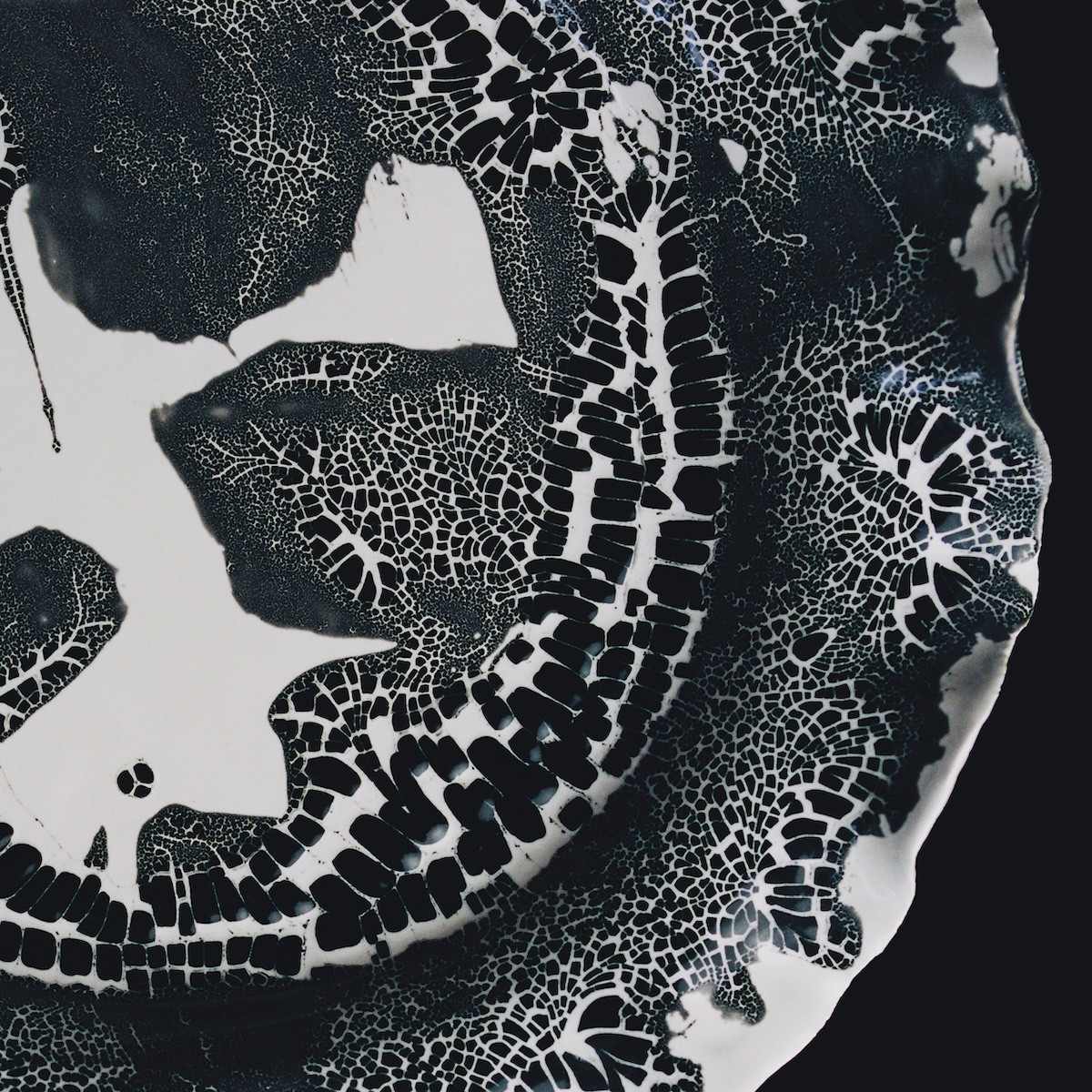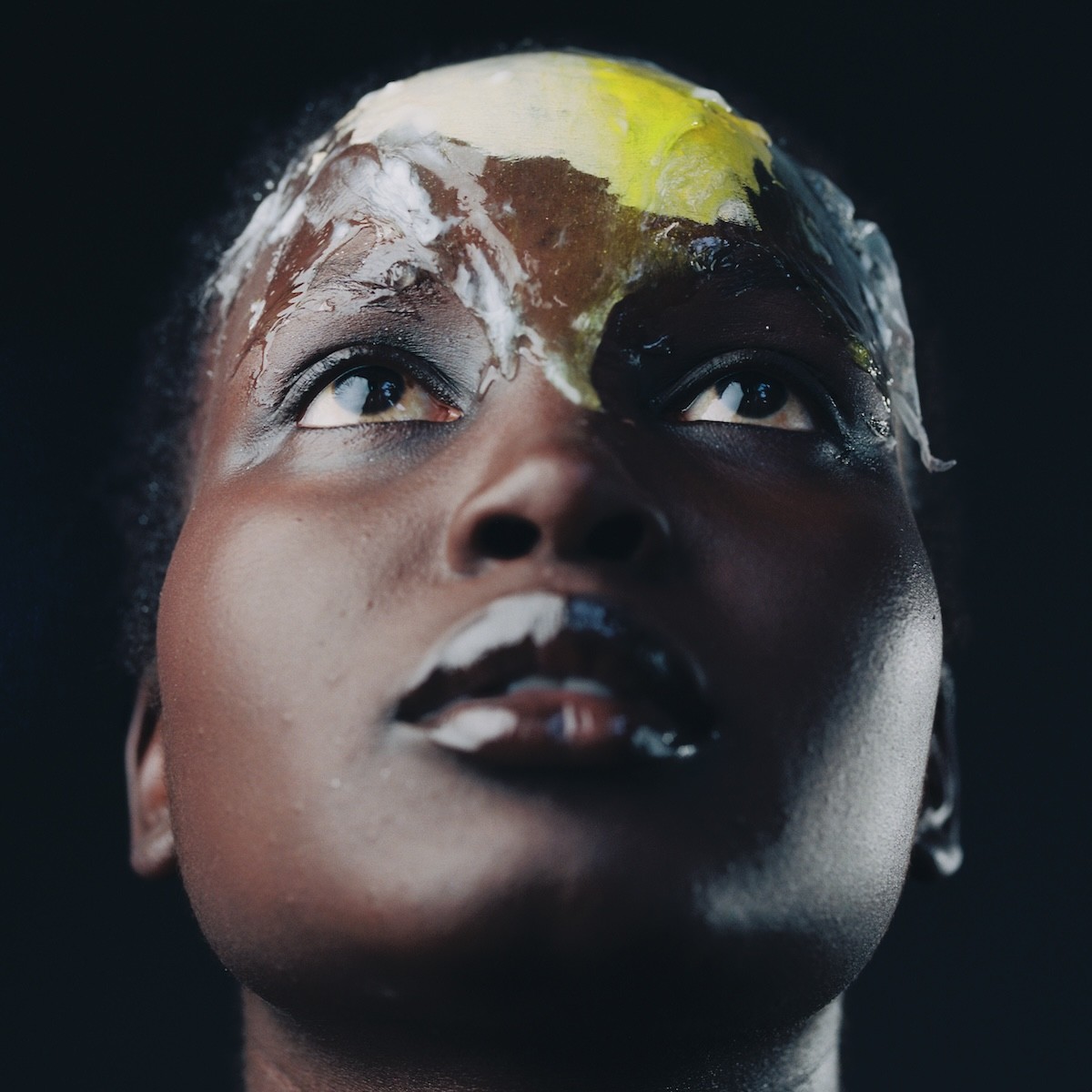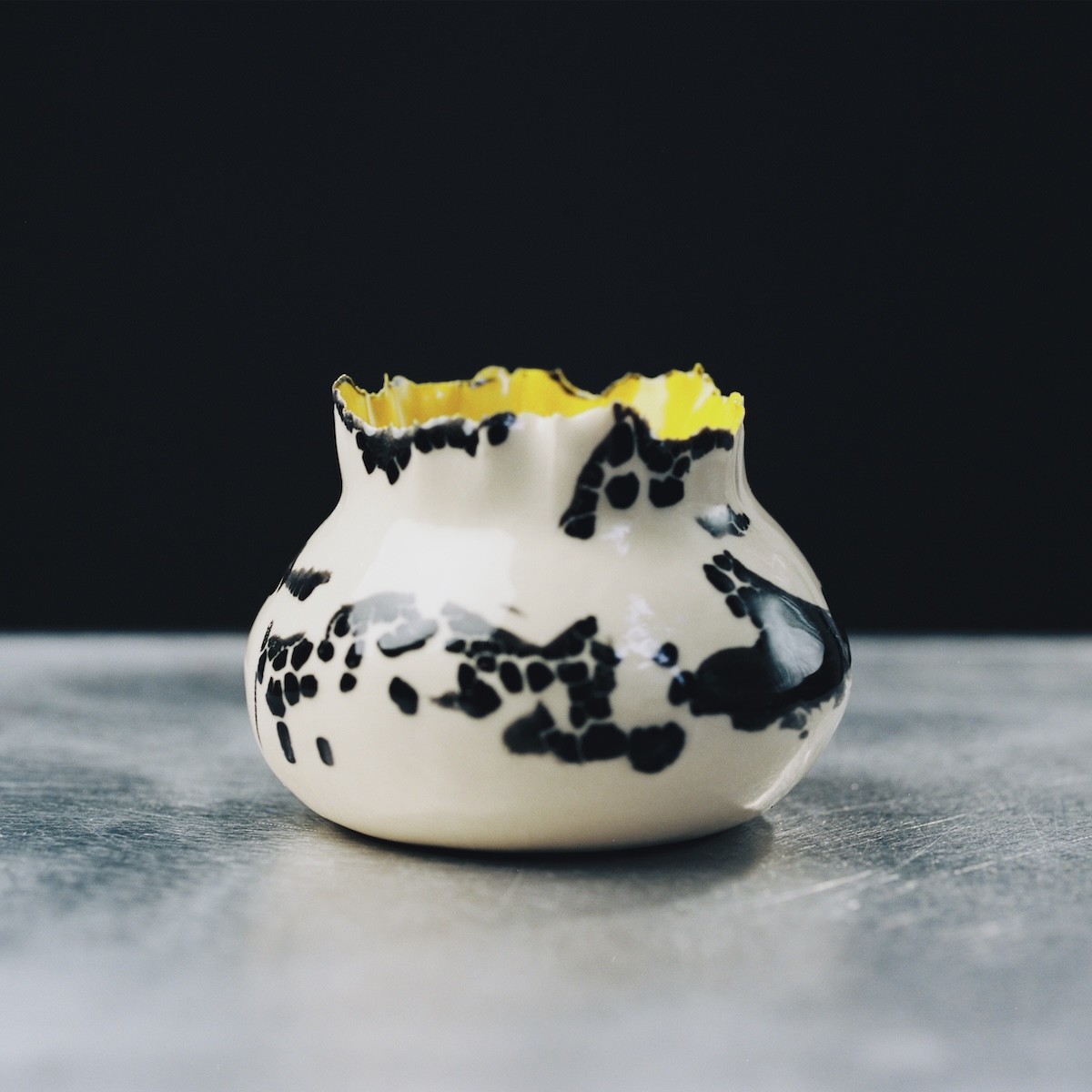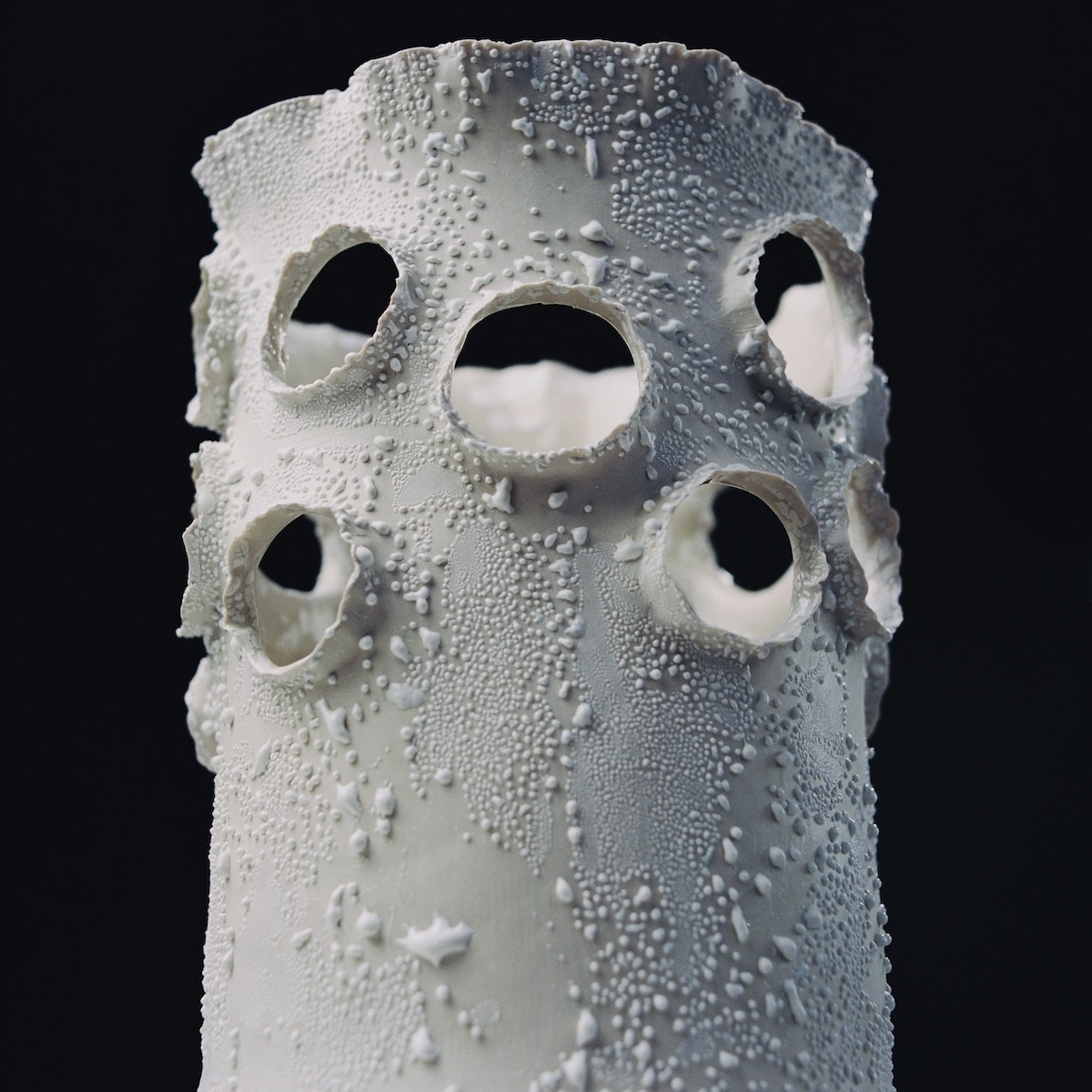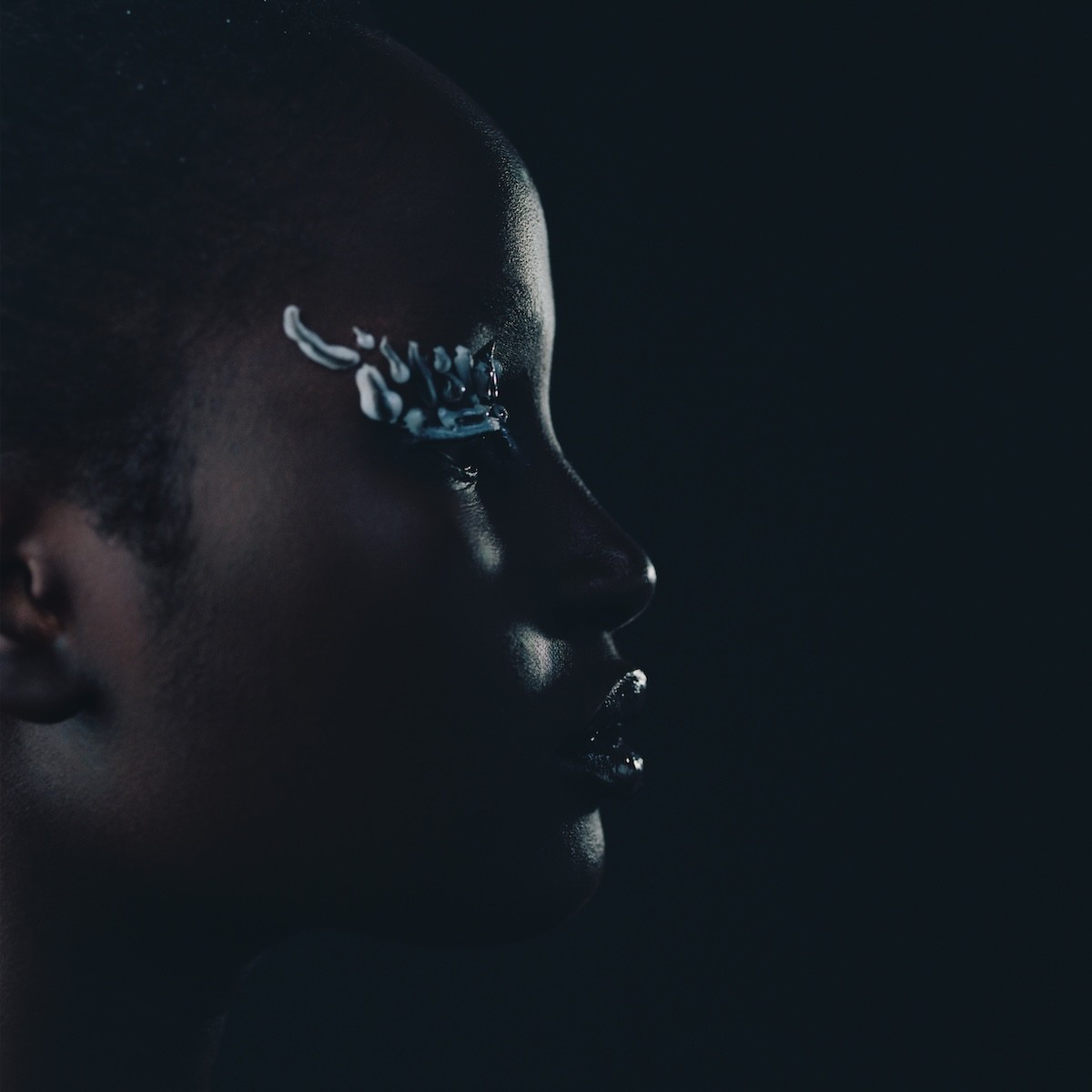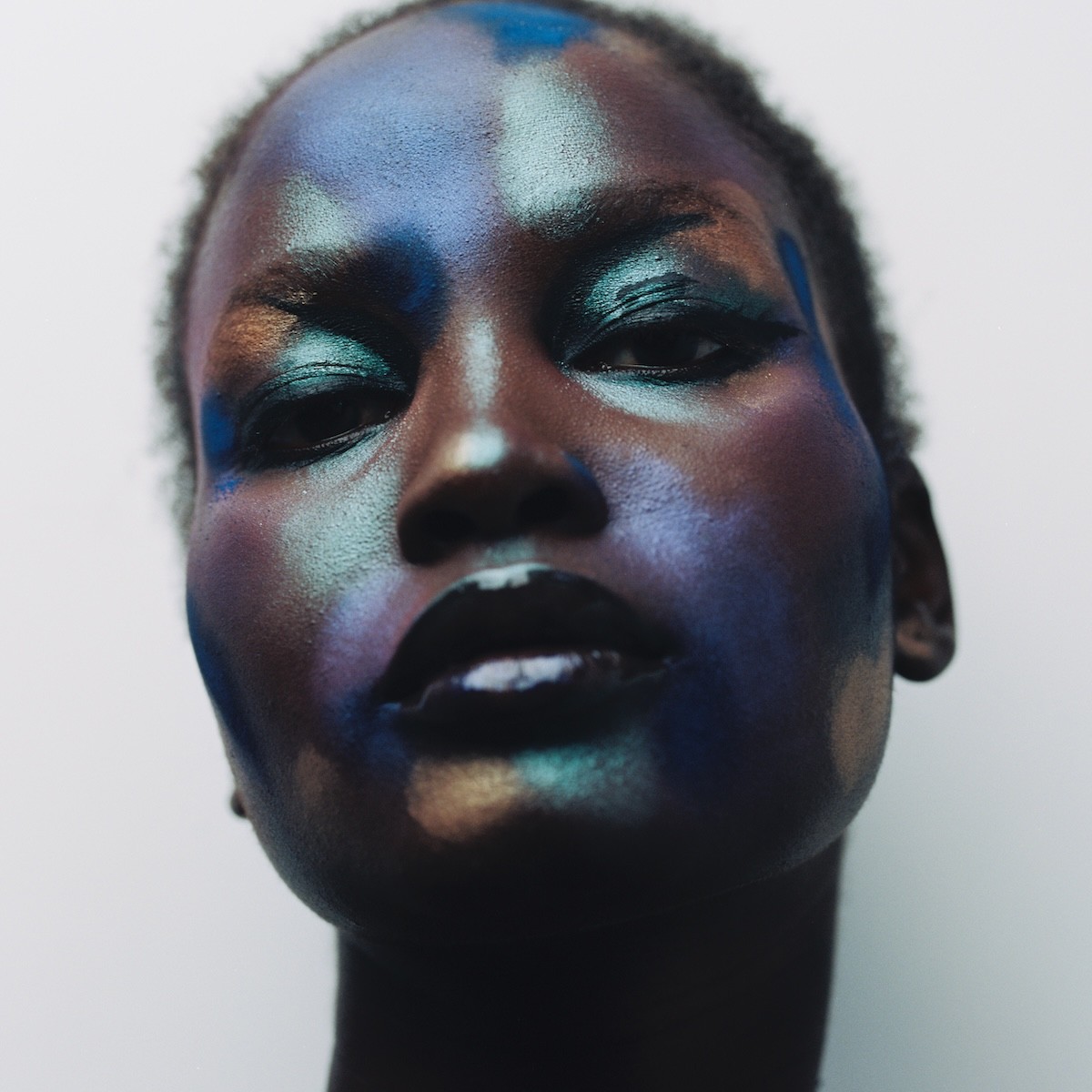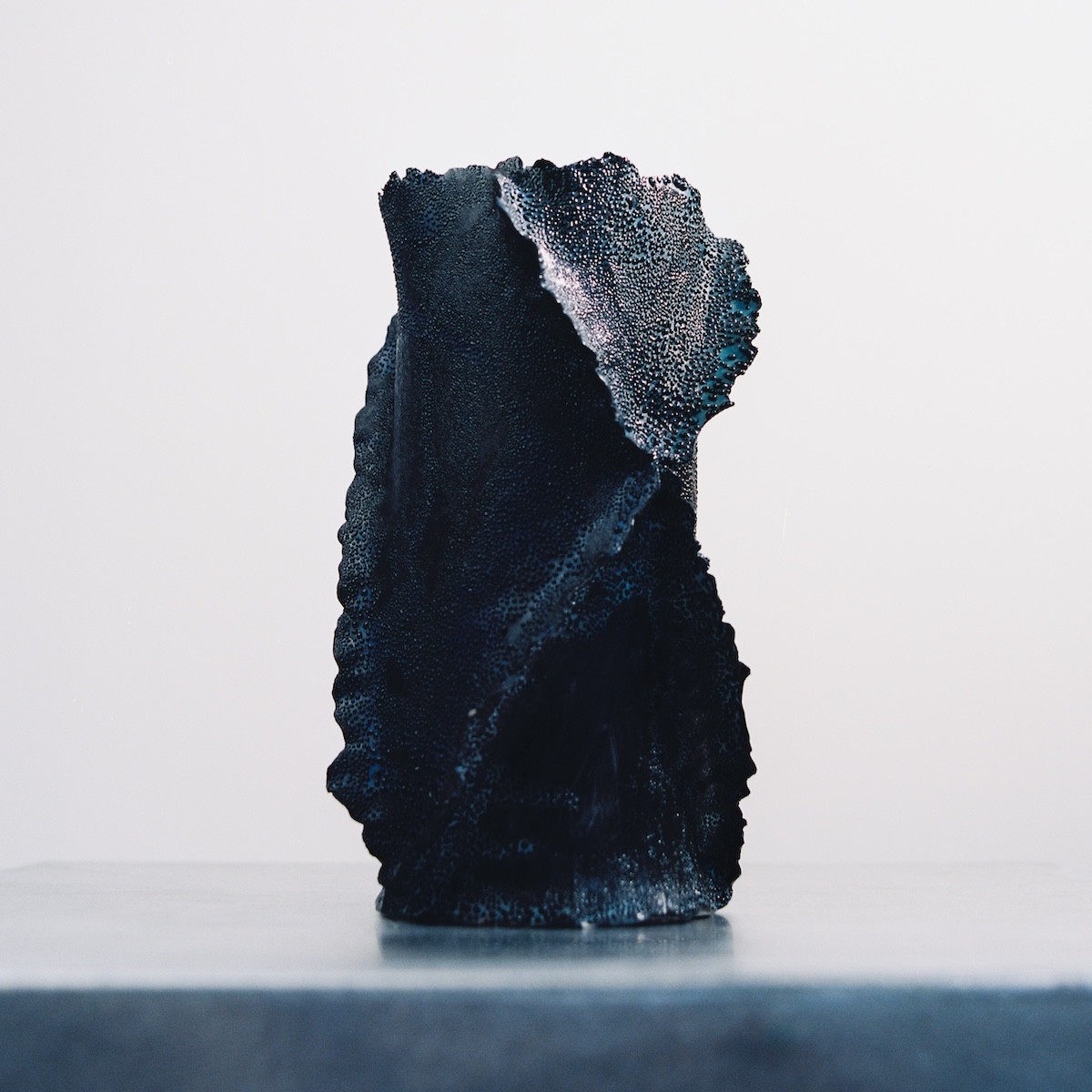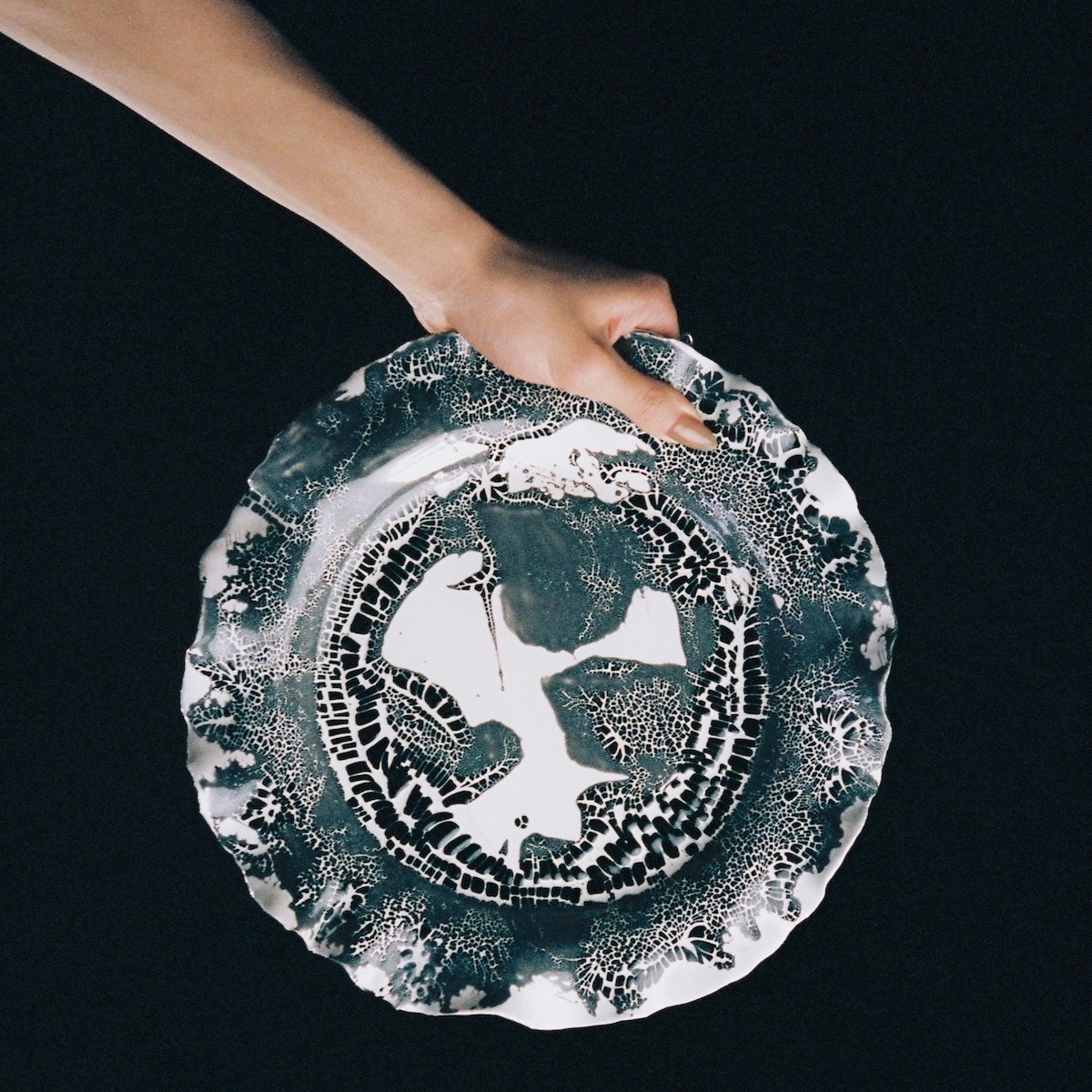Fractal Objects with Ceramicist Nathalee Paolinelli
Art — 21.11.25
Nathalee Paolinelli’s ceramics are non-Euclidean objects that seemingly bend the space around them. Rippling, whisper-thin lips of a vase curl into the ridges of leafy lichen forms, glazed with the freckled texture of morning dew. Sober industrial lines are an outlier in her creations, more often appearing to grow from organic cells. Like many forms in nature, no two pieces that she brings into the world are the same.
She glazes and paints each piece by hand to the rhythm of experimentation, play, and serious patience. Once shaped by the kiln, her work carries patterns and textures that seem to echo an imprint of a memory, not unlike how fractals tell the story of a quiet precision unfolding behind chaotic equations. Nathalee is no stranger to this chaos, as the unpredictability of her materials is foundational to her practice. With a background in photography and painting, Nathalee is a natural storyteller. Her porcelain objects are steeped in the undercurrent of the Pacific West Coast, where the dendriform shapes of coral and barnacles cling to coastal rocks, and fungi wrap tree trunks like ribbons in old-growth forests. This connection to the natural world has evolved into a narrative cornerstone in her work over time, emerging from a cyclical process. Her ceramics seem to emerge from nature, sparking in turn further organic exploration, creating infinite, self-similar worlds within worlds.
Her studio is located behind her home in a converted barn, painted pink, only accessible through a quiet alley in Strathcona, the oldest residential neighborhood in Vancouver. Inside exists a whole other ecosystem where you can observe a world within worlds. The space is warm, quiet, and inviting, grounded by a large wooden work table at its epicenter and two large kilns stationed along the far wall. Shelves line the walls up to the ceiling, with her most precious creations perched on the highest shelf above the door. Behind a curtain at the back of the studio, more shelves hold unglazed porcelain waiting to be fired to life; sometimes one-off experiments, children’s craft projects, or neat stacks of drying ruffle plates, like specimens in a biologist’s laboratory. The studio also acts as a revolving door of neighbors and clients, many of whom are Nathalee’s friends and part of the community she has built organically through her craft. Children often run amok in her studio, weaving under the table and playing inside the cardboard boxes that Nathalee will eventually use to ship out her top-shelf pieces to select clients and galleries across the continent; carefully bubble wrapped, sealed, and topped with a silver foil sticker that reads FRAGILE. There’s always a balance to the chaos.
TEETH: What is the most beautiful surprise that has happened in your studio?
Nathalee Paolinelli: This bubble glaze.
How did it happen?
It was magic. I learned from a friend that if I add a few chemicals together to an already existing glaze, I can change its consistency or tact— the way it adheres to the clay body. But the bubble glaze was really an accident. I poured too much of one solution in, and I tried to fix it by adding water, but then it was too thick. It became a paste like buttering bread. I didn’t know what would happen, but I decided to try it anyway. I put it in the kiln, and when I opened it up, I was like, holy shit, that worked. That actually worked!
This has been my favorite discovery. At that moment, something clicked in a way that I hadn’t really seen before. It looked like coral or lichen, and it all started making sense now.
Some of my very first works were these choral clusters, which were tubes that were jammed together. When I discovered this, I put those two things together. It was so exciting. That’s when more of the oceanic feelings in my work came through. Those two things happening at once evolved into everything happening here now.
It’s beautiful. There are so many things in nature that I’m seeing reflected here. It reminds me almost of the tubercules on a cucumber or water on your windshield as you’re driving through the rain.
I can probably look something up, and I could show you six references of what I think it looks like. It looks like when you’re walking in the forest and you see dew drops on a blade of grass. I’ve always noticed those things, and I like to document these references, and I think that’s what my Instagram is about. It’s not only about the work, but it’s also how I see myself with the work or what inspires me, and I try to share all those inspirations. It must resonate because people are really enchanted by it and not only the ceramics, and are always asking me, “Where do you live? Where are you in the world? Are you in Canada?”
Do you think it’s showing people a new way to see things — inviting them to see the world through your eyes?
Maybe in part it’s that motherly aspect. I’m always trying to teach my child about how precious nature is. When my daughter was little, she would see everything that I would see, and then she would point out things to me that I couldn’t see. It just became this really beautiful time we could spend together. But now she’s older [7] and she’s more interested in pop music and Hello Kitty, and less in nature walks. But when summer comes around, that’s always our time to go back because it’s warmer and she wants to be in the water. We swim a lot together.
Are you familiar with fractals?
Yes! Actually, only recently. I was on a hike and sitting by the water, pretty out there, just thinking about how we’re just floating in the universe and how it’s possible that we’re living inside a black hole, and all these mind-bending thoughts. I was having this moment when I started seeing fractals in the water. I felt like it opened something up in me to the present moment and how beautiful nature is. When I’m in nature, I’m always seeing these things, and I’m like, is this normal? Does everyone see this?
Yeah, it feels like one of those things that once you start paying attention, it’s impossible not to notice. And it’s so fascinating how it exists at every scale in the natural world. It’s like nature uses the same blueprint over and over again.
Totally. Recently, I was looking up at the sky, and there was a massive amount of birds. Every night at the same time in Vancouver, there is always a trail of crows flying east back to their homes. But that day, I started noticing that they make these harlequin patterns as they fly across each other. I’m very interested in that pattern. I see it everywhere. I see it in rocks, I see it in birds, and I even see it at the park, looking down at the ants as they walk along, crossing each other. I just go with it. I’m not trying to find a meaning, but I realize it’s present in my work too.
There is this sense of movement in your work, appearing almost as if it’s growing rather than something that is built.
It happens intuitively, like a give and take. Sometimes I’ll have an idea and try it out, and I’ll be pleased that it looks alive. I’m looking at this thing that I made recently… It’s abstract, but it looks alive in a way. At first, I thought it looked like barnacles, but the more I spend time with it, I think it looks like celery root or a deep-sea creature. Something floating and undulating in the water. It’s cool when that happens because I could never make it the same again.
I’ll often have ten forms on the table, not quite sure what I’ll do with them. But there are specific elements I make. Maybe forty tubes, two orbs, one bowl, a cylinder, and I’ll just start playing like, what if I take these tubes and add them to this cylinder? I let it dry a bit, and I’ll move on to something else. It happens organically. Clay requires that kind of timing. You have to let it dry before you can manipulate it again. So it’s all about process and flow, and I don’t plan it out.
It also sounds like a lot of patience.
I have so much patience, it’s boggling sometimes. Every time I open the kiln, it’s like Christmas. I think that’s one of the best parts about what I do. It runs for anywhere from 12 to 18 hours, and then you have to let it cool down for two days, while I’m sitting with this anticipation, wondering what happened inside. There are so many times when I try a new glaze and I have to wait, asking myself, did it work? I then half forget that it’s in there, and when I open it up, I have this great reveal. It’s such a gift. I love it.
Is there a point at which you feel like you surrender to the process?
There is this intervention with the way the clay dries. I don’t actually set something to be the way it is. Because what I make is so thin, when it goes into the kiln, the heat inside will shift it. So it’s moving. It’s a little something that I do, but also something that happens in there that I have no control over. There is this element of the unknown, and that’s the beauty of what I’m doing.
It’s such a cool experience to have this connection with something like the kiln. When I pull the pole out and look inside, it looks like molten lava. It’s pretty incredible. Sometimes I can’t believe I can do this. So many people are so afraid of that machine, but I just took to it, thinking, how hard can it be? I watched a few videos and learned how to use it.
How does trust guide your practice?
I was making things so thin, and in the beginning, people would often tell me, it’s just going to break. That’s not what ceramics are. But I liked it. I wouldn’t listen to anyone. I just had this feeling that I had to follow. So I kept going. Michelle at One of a Few and Karyna and Saager at Neighbour were the first to support me, and that was the beginning of my journey of having the work sold and in the public.
I think since I started this, I’m learning not to be precious about things and let them go. I love certain things I make, but when I sell them, I’m like, hi, I love you, and goodbye. Occasionally, people will post something on Instagram and tag me, and I’m so happy to see it has a good home.
I feel grateful that people trusted that I had some kind of vision, even before I fully saw it myself. I’m so glad I didn’t give in. It’s hard for people to trust their intuition, and even to hear it. But I had this strong feeling, and I followed it.
See more of Nathalee’s world and her work through her Instagram, and shop for her pieces at nathaleepaolinelli.com
